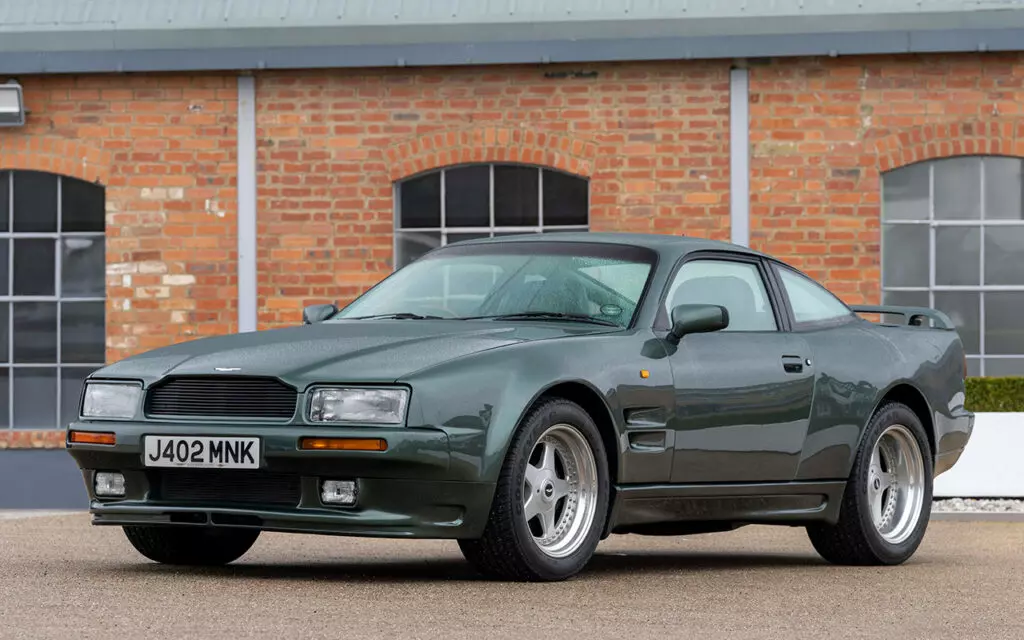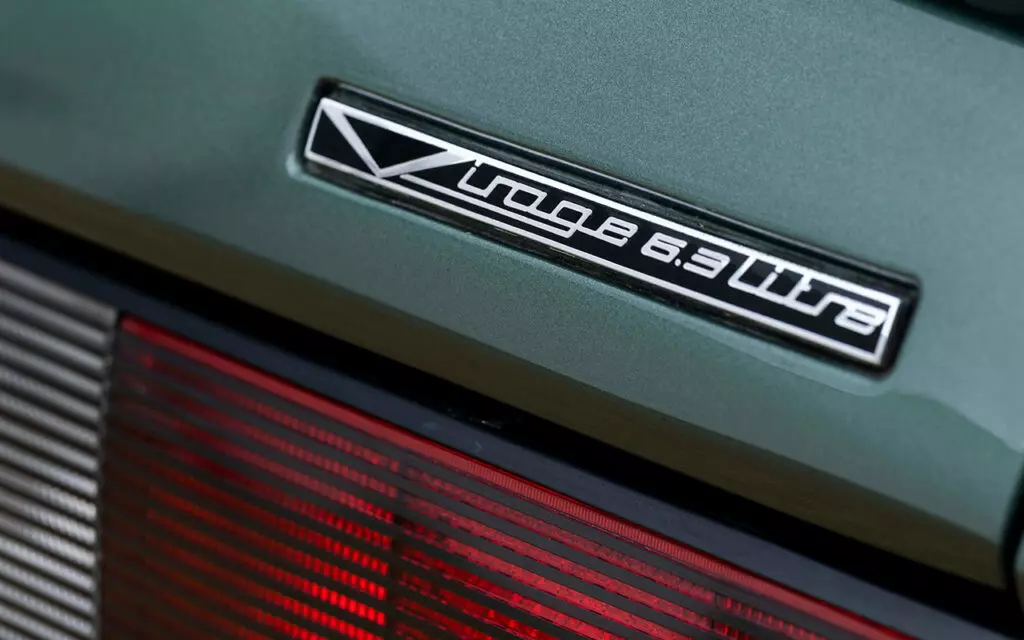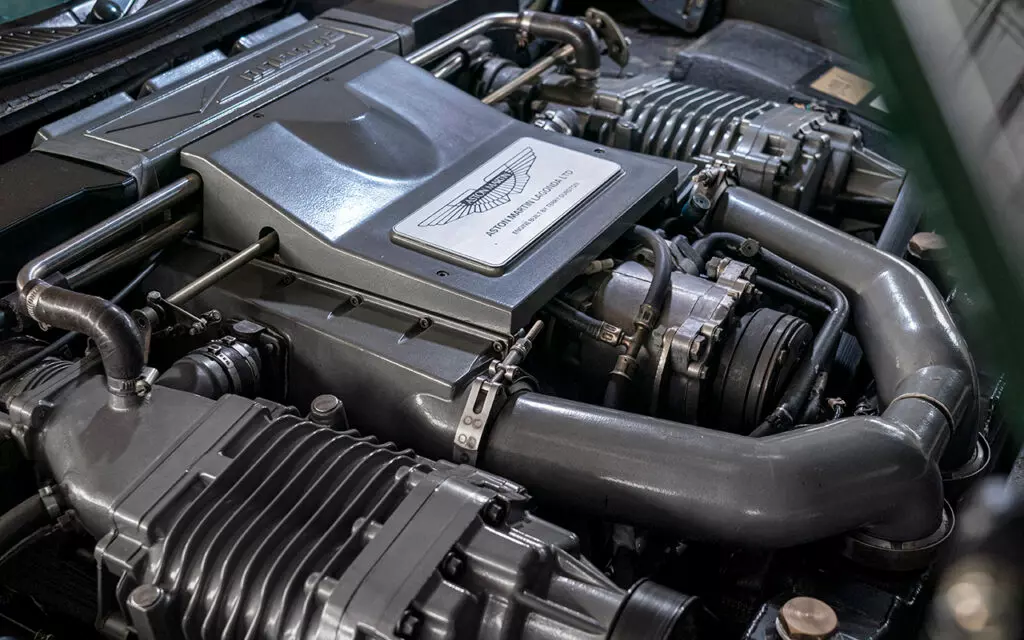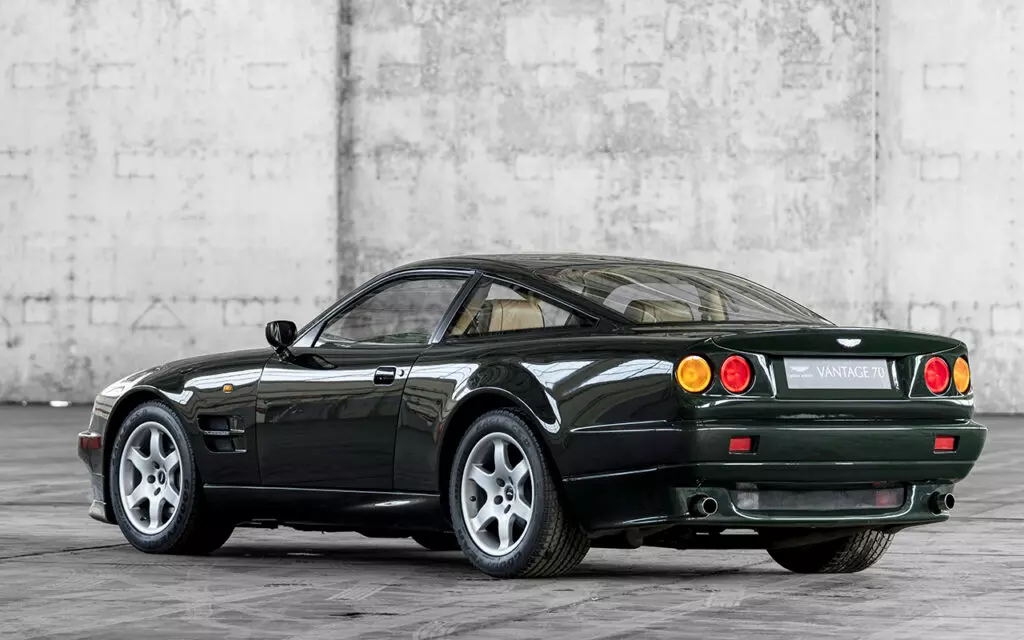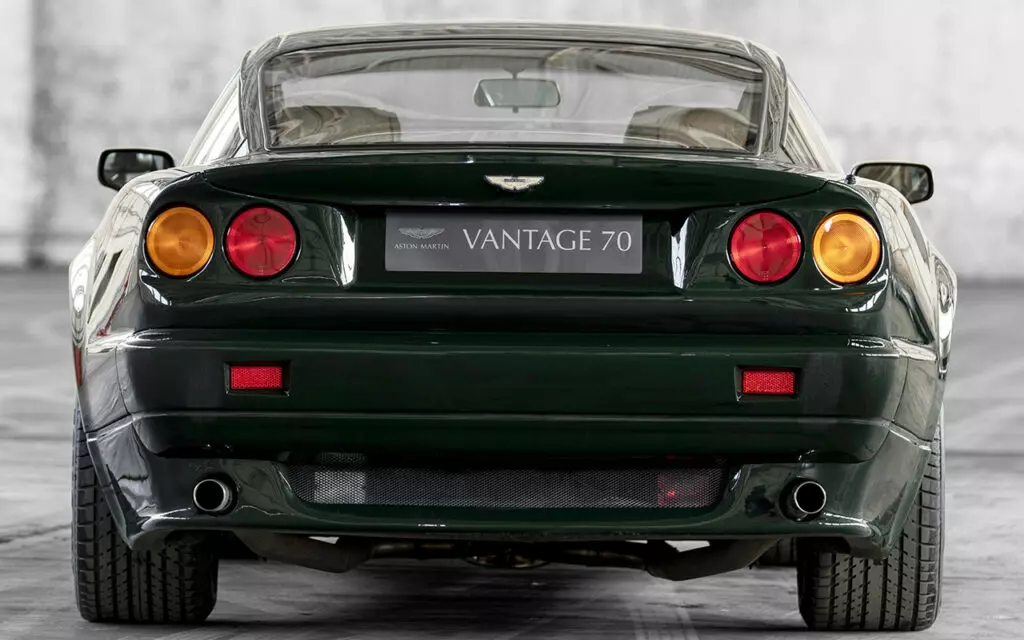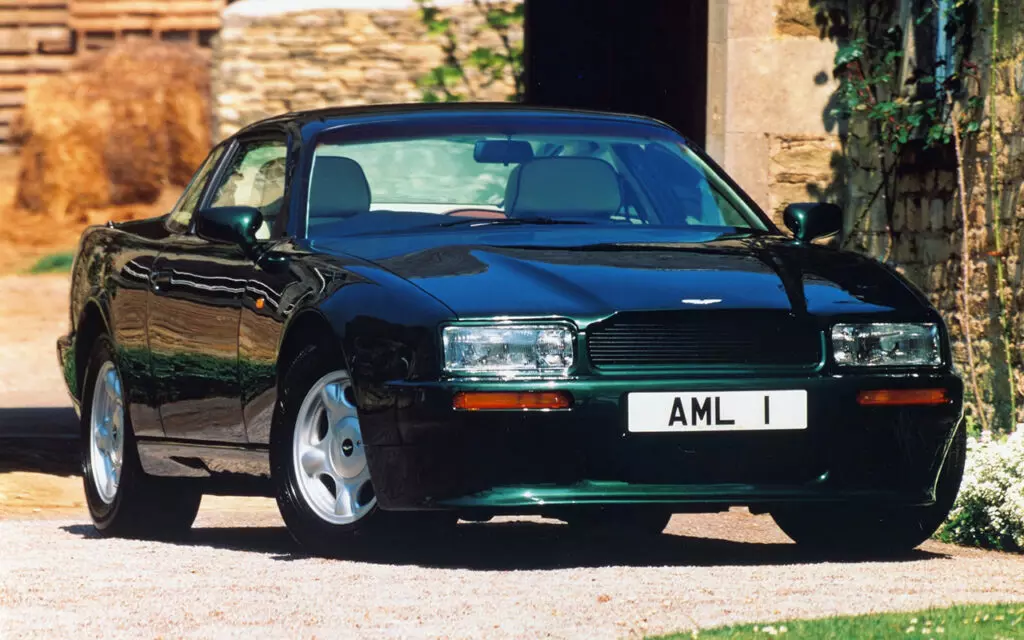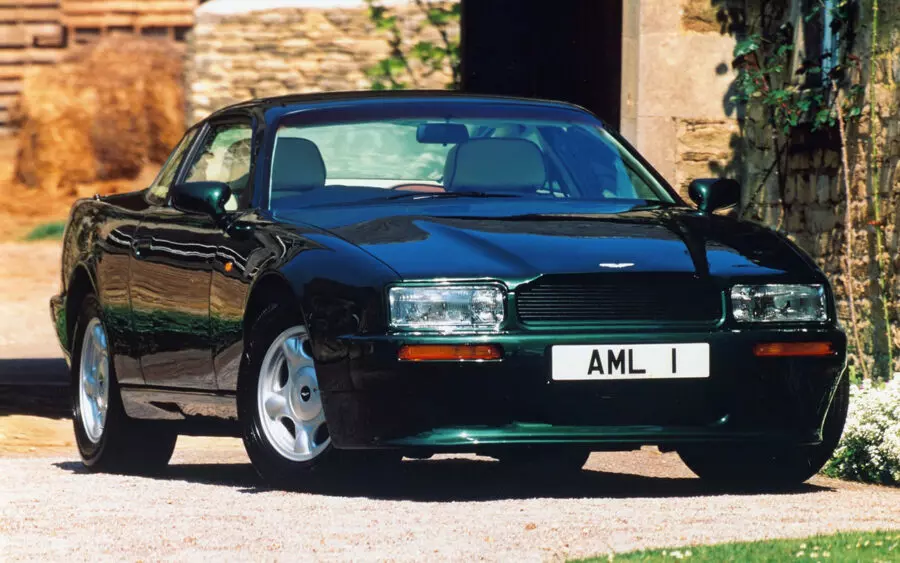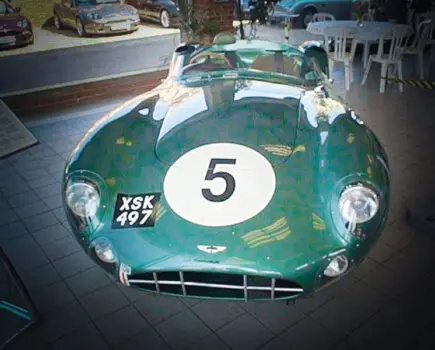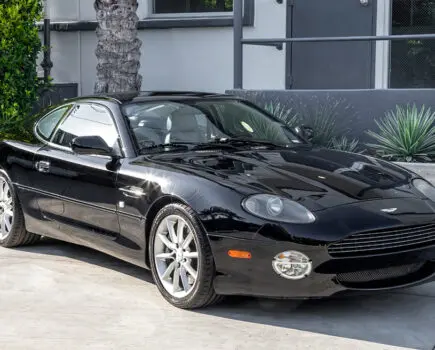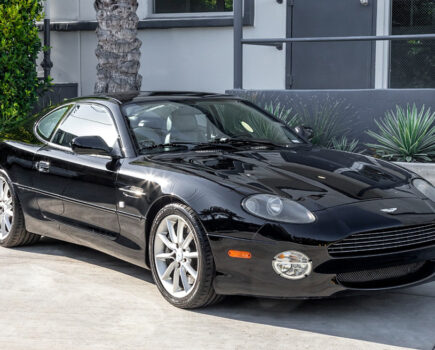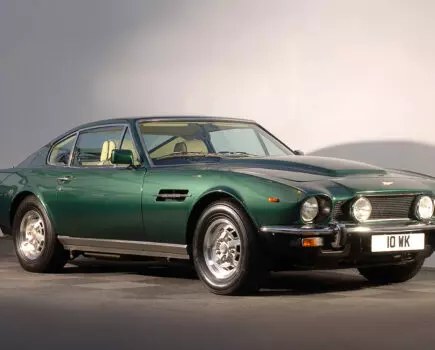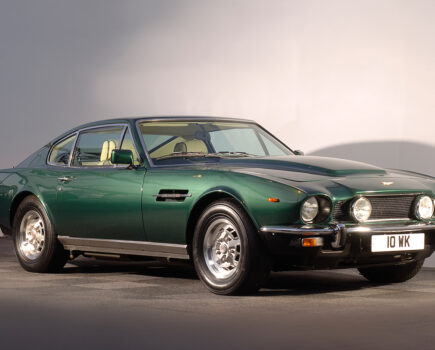The last of an illustrious line of V8-powered brutes, the Virage and its descendants were some of the most characterful products of Newport Pagnell
Words: Jon Burgess
Despite producing Britain’s first supercar in the form of the V8 Vantage, the V8 on which it was based belonged in the 70s. While the Livanos consortium, headed by incumbent chairman, Victor Gauntlett, had kept the firm afloat, Aston was still suffering financially from the stress and strain of getting the DBS V8 to market, fuel-injecting Marek’s engine, and staggering forward in spite of bankruptcy in the late 1970s.
New cars were needed – and a smaller, entry-level machine to sit alongside the V8s, would bring in much needed revenue. Alas, the money simply wasn’t there – but, by the late 1980s, Ford had been found as Aston’s unlikely saviour. Former Ford of Britain head of public relations, Walter Hayes, knew both Henry Ford II and Victor Gauntlett personally; by 1987, the Blue Oval had a 25 per cent stake in the firm. Traditionalists baulked, fearing that Ford would reduce Aston Martin to a trim shop for its cars, much like the casual fate that befell Ghia.
A year earlier, designers had been competing to design a successor to the glorious, but outmoded V8 saloons – from five competing teams, it was the quarter-scale model of John Hefferman and Ken Greenley, Royal College of Art tutors, that won.
Acutely aware of Aston’s shortage of funds, the successful proposal, Project 2034, used Audi 200 headlights and VW Scirocco rear clusters smoked to hide their origin.
The 2+2 GT body style was retained, so as not to frighten off long-term customers; its engine had to meet forthcoming emissions standards, as well as run on unleaded petrol from 1992. Aston also wanted a simpler to build car – at the time, it was producing four to five cars a week. A five-speed ZF manual, and a three-speed automatic, were also selected as transmissions.
Having lost much of its engineering team in 1983, when Aston Martin Tickford was sold off, Project 2034’s requirements saw the 5.3-litre Marek V8 updated with dual-overhead cam heads and hydraulic valve lifters by Callaway Engineering in the US; chief engineer, Scott Ellis, worked with the Cranfield Institute of Technology to simplify 2034’s chassis. Using the 1974 Aston Martin Lagonda chassis as basis, itself an Aston development of Touring’s Superleggera method of construction, the front chassis rails, front crossmember and bulkhead were retained; everything else was redesigned with the help of Computer Aided Design. Harold Beach’s beloved De Dion suspension was part of 2034, too, its radius arms, like the Alfa GTV6, made of aluminium to save weight.
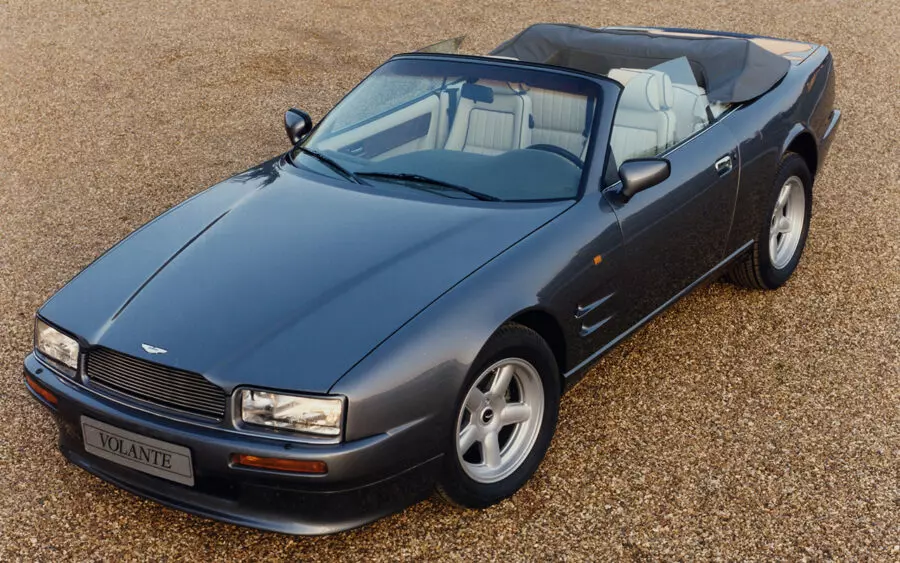
Following 70,000 miles of testing in a shortened Lagonda mule, Virage, as 2034 was named, was ready for the 1988 British International Motor Show. While received favourably, critical interest quickly tailed off – and trouble was brewing within Aston Martin; Ford wanted Aston Martin closed down, as it had bought Jaguar in 1989 and had already eliminated Newport Pagnell’s racing team to avoid further conflicts.
The Virage Volante broadened the range in 1990 just as the Aston Martin Lagonda [Series 5] had left production a year earlier; by 1991, however, Gauntlett was stepping down, and Walter Hayes, who had first brokered the Ford deal, stepped into Gauntlett’s seat and laid the basis for Aston’s revival, convincing the US giant of the firm’s significance to a tight budget.
Still, the Virage saloon was gradually improved. Aston Martin Works Service offered a 6.3-litre conversion at the end of the year; assisted by late marque specialist, RS Williams, the larger engine was based on the bored out and stroked version of the now-dead AMR1 racing car’s Marek V8, which Williams ran on Aston’s behalf. Williams developed the engine further, and was working on a 7.0-litre, 500bhp version when Works Service bought the rights.
Results were dramatic: the 6.3-litre conversion lifted power from 330bhp to 465bhp. Lower, wider, and dramatically styled to cope with the extra grunt, massive 14-inch brake discs, and a six-speed ZF S6-40, as used by the Lotus Carlton and Chevrolet Corvette ZR-1, replaced the ‘Friedrichshafen’ five-speed. If desired, the Works 6.3 engine could also be had in Volante form.
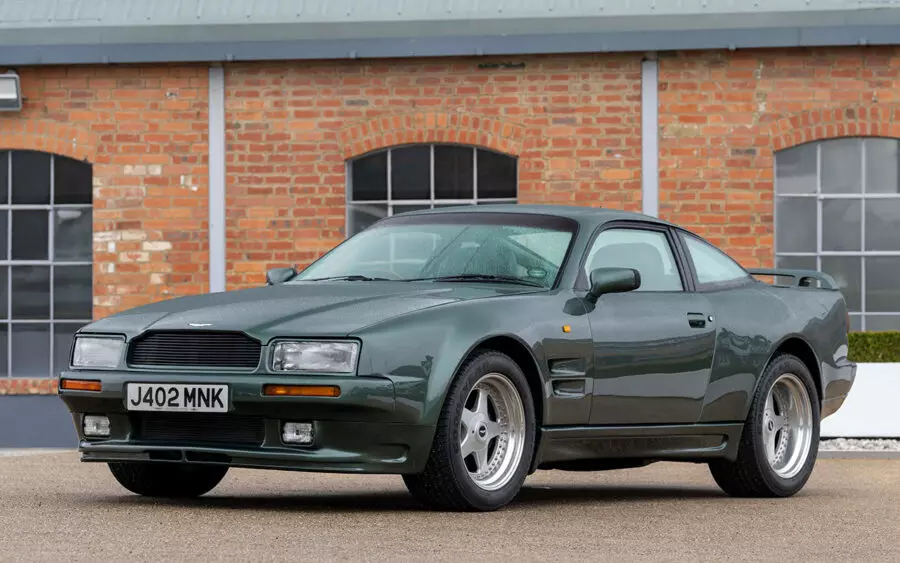
Suddenly, all eyes were back on the Virage; the 6.3 had proven enough of a spectacle for Aston to pursue extreme levels of performance. It was already working on a twin-supercharged car to revive the Vantage nameplate, having purchased several ‘blown’ Ford Thunderbird SCs to better understand Dearborn’s EEC IV engine management system.
Launched to huge critical acclaim in 1992, the Vantage had 550bhp on tap from its 5.3-litre V8 – and 550 lb/ft peak torque. A reduced compression ratio and the use of Ford’s EEC IV engine management – instead of the Virage’s Weber-Marelli unit – allowed the car to meet emissions regulations worldwide.
Retaining the Virage’s roof and door skins, the Vantage was otherwise restyled by John Heffernan, with every other panel being new; he was guided by many of the aesthetic changes performed on the 6.3. Suspension changes made to the Vantage also fed back into the rest of the Virage range; its rubber mounted spherical bushings, while a good isolator of noise and vibration, marred the rear end with dive and squat; with the Vantage suspension redesign, they were dropped altogether
Aston Martin Works remained busy as the two-ton Vantage wowed TV audiences on Top Gear in 1992, adding a Virage Shooting Brake to the range and a built-to-order, four-door Lagonda Saloon by 1994, bringing back the Lagonda name for the sixth (and seventh) time. A handful of specially made, five door Lagonda Virage Shooting Brakes were also constructed for a private client.
Haynes’ diligence with Ford had paid off; the Americans, having taken full control of Aston Martin in 1991, had bought the firm in its entirety by 1994, had previewed the DB7 a year previously, and was about to commit to full scale production of the six-cylinder car.
With DB7 production well underway, Walter Haynes retired for a second time, his caretaker role having assured Aston’s future (and confounded his critics). As the Nineties wore on, however, the evocative V-car range was clearly on borrowed time. It would be emissions laws, not Ford, that would mitigate its demise.
Still, Aston ploughed on, giving the Virage the Vantage’s body but retaining its tamer mechanicals (and revised suspension) by 1996, naming it the V8 Coupé. The Volante carried on unaltered for another year until a lengthened model, the V8 Volante Long Wheelbase, adopted the V8 Coupé’s Vantage-lite styling cues, picked up the baton, produced in parallel until 2000.
Not that the Vantage (sometimes referred to retrospectively as the ‘V550’) was going to go out without a bang. More suck and squeeze, really, as from 1998, Works Service offered (and continued to offer) a ‘V600’ conversion for existing Vantages, which upped the already considerable power output to 600bhp and 600lb/ft of torque.
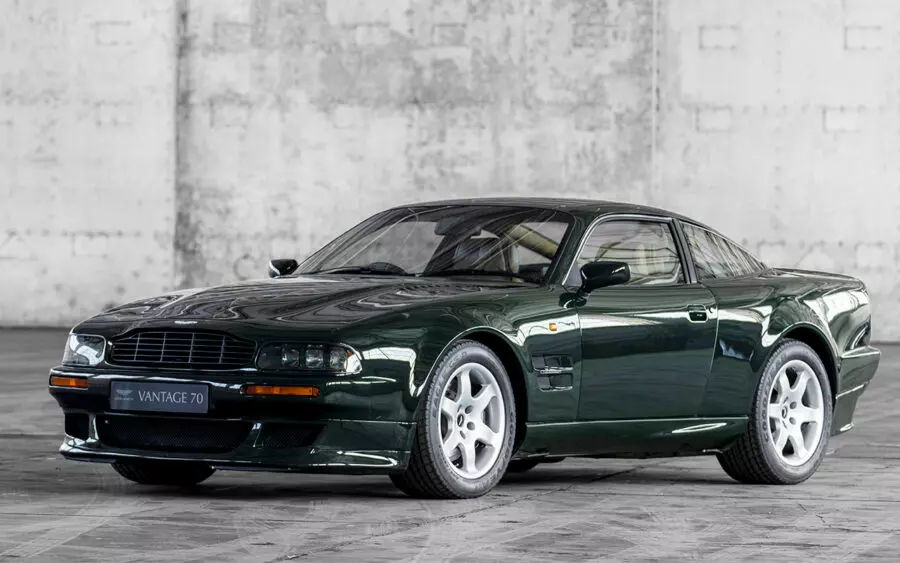
A final batch of 40 Vantages, celebrating the four decades since Aston’s win at Le Mans, were announced in 1999; one made for each year since the firm’s victory at Le Sarthe, V8 Vantage Le Mans cars boasted 604bhp, 604lb/ft torque, and used special Dymag alloy wheels, Koni shocks and a twin-nostril, blanked out front grille, to put the power down. Buyers could also opt for the standard 550bhp/550lb/ft ‘V550’ tune if they so chose, for their Le Mans.
The final curtain? Not quite. In 2000, as EU emissions laws loomed large, and with the last V8 Vantage Le Mans coupés under construction, Works Service completed nine V8 Volante Vantage cars, allegedly building one to Volante Long Wheelbase specification.
5016 V-cars may not seem much of a legacy, but the Virage and Vantage shouted far louder than numbers could ever suggest.
Aston Martin Virage timeline
1986
Heffernan and Greenley, RCA tutors, beat four other design teams, winning the race to design Aston’s new V8 saloon successor. Project 2034 is born; adopting a shortened, heavily modified 1974 Aston Martin Lagonda chassis and platform.
1987
Ford buys a 25 per cent equity stake in Aston Martin from the Livanos/Gauntlett consortium, brokered by middle-man, Walter Hayes.
1988
Virage saloon launched, with Callaway-enhanced, dual overhead cam, 5.3-litre V8. Five-speed manual, and three-speed automatics, offered.
1989
Aston Martin Lagonda [Series 5] production ends. Ford buys Jaguar, and closes Aston Martin’s racing team.
1990
Virage Volante launched.
1991–1992
High-performance, wide-bodied Works Service Virage/Volante 6.3 conversion offered. Twin-supercharged Vantage arrives. Incumbent chairman, Victor Gauntlett, steps down; caretaker, Walter Hayes, steps in. Ford takes full executive control of Aston Martin. Works offer Virage Shooting Brake.

1994
Hayes steps down; DB7 production begins in Bloxham, Oxfordshire.
Lagonda Virage Four Door and Lagonda Virage Five Door Shooting Brakes revive Lagonda name; built in tiny numbers.
1996
V8 Coupé arrives, replacing Virage saloon; essentially a Virage with a Vantage body.
1997
V8 Volante replaces Volante – a Volante with V8 Coupé styling. Works Service offer a V8 Volante Long Wheelbase, with an elongated wheelbase.
1998
Works Service offer V600 conversion for existing Vantages; power and torque upped from 550bhp/550lb/ft to 600bhp/600lb/ft. Works Service carry on converting Vantages after production is wound down.

1999
Commemorative V8 Vantage Le Mans announced; 40 final cars with 604bhp, uprated suspension and twin-nostril grilles.
2000
V8 Coupé and Volante/Volante Long Wheelbase production ends; nine Virage Volantes commissioned and built by Works Service.
